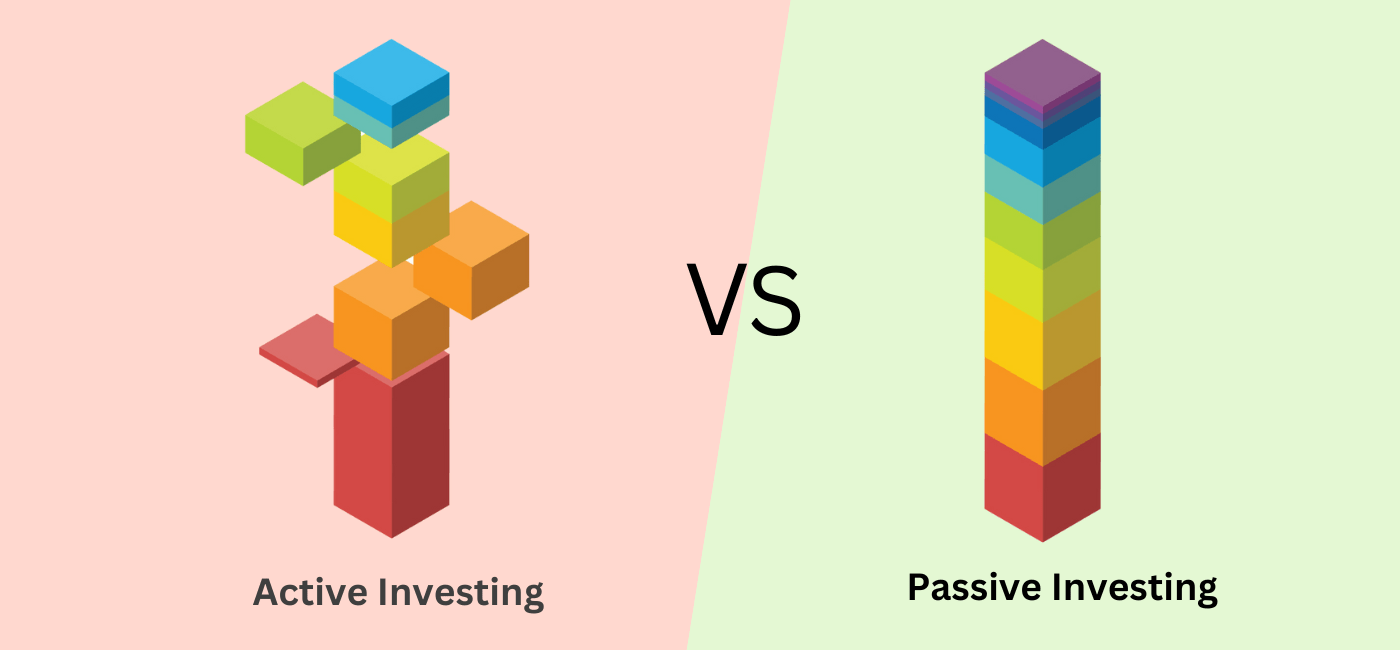Most investors have a unique way of doing things. Few are adventurous, while others follow safe paths to creating wealth. Similarly, investing has two styles, i.e., active, and passive investing. Over the last few months, the investing trends in the managed funds space in India’s mutual fund industry have changed. Investors are now more focused on passive funds over actively managed funds.
Before we understand the market scenario, let us see what Passive and Active Funds are.
What are Passive Funds?
Passive funds are the index funds that follow the market index to generate returns that mimic the index. Fund managers of passive funds often invest in the same percentage as the underlying index. The goal of such passive funds is to generate market-like returns.
Passive Equity funds are index funds that equity indices like Nifty 50, BSE100 index, or sectoral indices. For new investors not sure about investing directly in equities investing in passive equity funds can be a fantastic addition to your portfolio initially. Passive funds include both index funds and Exchange Traded Funds (ETFs).
What are Active Funds?
Active fund are funds where the fund managers actively track the performance, do their due diligence, and then move their investments to get higher returns and outperform the index. An Equity Fund also called a Growth Fund, invests in shares of companies.
Here the fund manager tracks the market, studies the companies, scrutinizes performance, and searches for the best stocks to invest in. Such active funds are based on the market cap, sectors, or specific themes.
Active Equity Funds invests in company shares to give retail investors the benefit of professional management and portfolio diversification.
What’s Happening Now?
If you look at the inflow of funds to passive equity funds, it has surpassed active funds in recent months. Per the Association of Mutual Funds in India (AMFI), the ratio of active funds inflow to passive funds inflow has reduced to 0.4:1 in August 2022 from the last year’s average of 1.13:1. The ratio reached a peak of 1.67:1 in January 2022 before it moderated.
Per the AMFI monthly fund inflow data for August 2022, index funds mobilized ₹ 9766.37 crores, and ETFs mobilized ₹12,421.72 crores during the month. While cumulative funds mobilized by the large cap, mid cap, small cap, and multi-cap funds is ₹13,882.68 crore, it is much lower than the investments index funds and ETFs together mobilized.
Why the change in investing trends when actively managed funds dominate managed funds space over other funds categories?
Let’s look at the reasons:
Institutional Play
India’s retirement fund body, Employees Provident Fund Organisation (EPFO), is changing how they invest members’ retirement funds. It is the reason for the sharp growth in investments in passive funds. In 2017, EPFO hiked its investment limit in ETFs to 15%, and by March 2022, it had made an investment of ₹1,59,299.46 crore in ETFs. And in Q1 FY23 (April-June 2022), the retirement body invested ₹12,199.26 crores in ETFs.
In doing so, the EPFO provided a big push to the number of funds mobilized in passive funds, which is evident if you consider that in August 2022, large-cap funds added 35,594 new folios and mobilized ₹ 3,621.52 crores while ETFs added 41,448 new folios and mobilized ₹12,421.72 crores. It is evident that big players are fishing in the market.
The investments made by EPFO are only in ETFs based on Nifty 50, BSE Sensex, Central Public Sector Enterprises (CPSE), and Bharat 22 indices. Also, a sharp rise in the number of EPFO subscribers in the first few months of FY23 has helped to push the number of investments in passive funds higher. The retirement saving body is mulling increasing the investment cap in ETFs to 25% to bridge the shortfall in returns. If approved, the market would see a fresh flow of funds into passive funds.
Greater Investor Awareness
India has been lagging the curve in passive fund adoption compared to other developed countries. In the United States, passive funds accounted for 16% of the US stock market capitalization, more than the 14% of active funds held at the end of 2021.
Investors understanding of the importance of low-cost investment strategies and studies showing over 80% of the actively managed funds underperforming their benchmark index in the long term have helped shift investor preferences toward passive funds. Mutual fund houses have also expanded their offerings in the index funds segment from only 32 funds in February 2020 to 102 index funds in August 2022, with a net AUM of ₹1,04,742 crore.
Investor-friendly Measures by SEBI
One of the most crucial components of any index fund and ETF is the tracking error, which measures how effectively the fund is tracking the performance of the underlying index. Earlier, there was no regulatory guideline on the maximum tracking error limit. A higher tracking error means the fund has underperformed the index and failed to meet the investment objective.
SEBI, introduced a cap on tracking error limits for passive funds in a recent directive. Tracking error cannot exceed 2% based on the last year’s data. For debt index funds and ETFs, it should not exceed 1.25%. And the tracking error needs to be calculated daily.
Earlier passive fund tracking errors were published after the fund had completed three years. However, better disclosures and regulatory tightening in passive funds have helped to improve investor confidence.
Conclusion
It is not just one factor but the contribution of multiple factors that resulted in a higher inflow of investments in passive funds than in active funds. Also, lower ticket sizes to start an investment in index funds, easy-to-understand investment products, and simplified investment journeys by new-age fintech platforms have contributed to the growth.
In the discussion of passive funds v/s active funds, the former still has an upper edge because they are closer to the market and provide investors with a diversified portfolio of high-quality stocks.
Given the emerging complexities in the market, it has become exceedingly difficult to outperform the market and generate higher returns consistently. Therefore, experts suggest having a passive investment strategy with active investing for wealth creation over the long term.
Read more: About Research and Ranking
How useful was this post?
Click on a star to rate it!
Average rating 0 / 5. Vote count: 0
No votes so far! Be the first to rate this post.
 Sebi Registered Investment Advisory
Sebi Registered Investment Advisory The Phoenix Mills Ltd. (PDF)
The Phoenix Mills Ltd. (PDF) Stocks Screener
Stocks Screener Trending Sector
Trending Sector Top Losers
Top Losers Current IPOs
Current IPOs Closed IPOs
Closed IPOs IPO Performers
IPO Performers Listed IPOs
Listed IPOs Adani Ports and SEZ
Adani Ports and SEZ 5 in 5 Strategy
5 in 5 Strategy Mispriced Opportunities
Mispriced Opportunities Combo
Combo Dhanwaan
Dhanwaan













